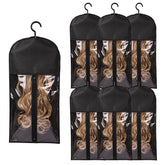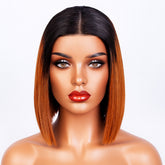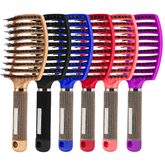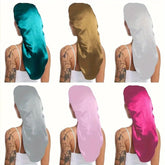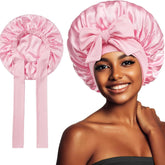The Hair-Washing Mistake Making Your Scalp Oilier—Fix It This Week
If your fringe gleams by mid-morning and your roots look shiny under office lights, the reflex is often to wash more and scrub harder until your scalp feels squeaky-clean. Frustratingly, that short-term fix is the very habit that can push your scalp to produce even more oil. The result? Greasy roots sooner, drier ends, and a wash cycle that keeps getting shorter.
The good news: with a few small changes, you can break the greasy loop in a week. Understanding how your scalp responds to cleansing, heat and friction lets you dial back oil without sacrificing freshness or volume. This guide explains the common mistake that accelerates oiliness, how to reset your routine in seven days, and the everyday habits that help you stay clean longer—without constant shampooing.
Consider this your practical plan for calmer roots, softer lengths and fewer emergency washes.
The mistake that triggers oilier roots
The big misstep is over-cleansing—washing too frequently, using harsh or high-foaming formulas, scrubbing aggressively, and chasing that squeak. Your scalp naturally produces sebum to protect skin and hair. Strip too much at once and your scalp can respond by ramping up oil production to compensate. That rebound means hair looks greasy faster, tempting you to wash again, and the cycle repeats.
Hot water and heavy-handed massaging make it worse. Very warm rinses lift the cuticle and can irritate the scalp, while vigorous scrubbing with nails can disrupt the skin barrier. Both can prompt more oil, sensitivity, and flakes. Even well-meant “deep cleans” every wash can be too much if your scalp is already reactive.
Instead, aim for clean-but-comfortable: a thorough yet gentle cleanse, lukewarm water, and light fingertip pressure. Focus shampoo on the scalp and roots (where oil lives), and keep conditioner on the mid-lengths and ends (where moisture is needed). That balance keeps your scalp calm and your lengths nourished, so you’re not chasing shine at the top and frizz at the bottom.
Reset your wash routine in a week
You don’t need a dramatic detox to notice a difference. A one-week reset can slow the grease cycle while keeping you presentable for work or study. Use the steps below as a checklist and adjust based on your hair thickness and lifestyle.
- Day 1: Start with a thorough yet gentle wash. Use lukewarm water, apply a small amount of shampoo directly to the scalp, and massage with pads of your fingers in small circles for 60–90 seconds. Rinse well. If you’ve used heavy styling products, do a light second cleanse on the scalp only. Apply conditioner from mid-lengths to ends, then rinse cool.
- Swap friction for care. Blot with a microfibre towel or soft cotton T-shirt—no rough rubbing at the roots. This reduces frizz and scalp irritation that can trigger oil.
- Dry with distance. Keep your hairdryer 15–20 cm away, medium heat, and aim airflow down the shaft. Concentrated heat at the roots can stimulate oil and collapse volume.
- Stretch, don’t suffer. If you typically wash daily, try every other day; if you wash every other day, try every third day. On off-days, refresh the scalp with a minimal amount of dry shampoo at the roots only, holding the can at least 20 cm away. Allow a few minutes, then brush through to avoid dull build-up.
- Condition smarter. Avoid putting conditioner or masks on your roots. Focus from the ears down, detangling gently with a wide-tooth comb while the conditioner is in, then rinse thoroughly so nothing lingers near the scalp.
- Clean tools, cleaner results. Wash your brush and comb mid-week. Residue and oils transferred back to clean hair make it look greasy faster.
- Style with intention. Use lightweight products sparingly and keep serums, creams and oils to the ends. If you need hold at the top, choose a light mist and apply at a distance.
- Keep hands off. Touching and flicking your fringe transfers face oils to your roots. Pin fringe back during workouts and skincare to protect it from sweat and creams.
By the end of the week, most people can comfortably add an extra day between washes or, at minimum, reach the evening without limp roots. If your scalp feels tight, itchy or flaky, you may be cleansing too harshly; if it still looks oily within hours, focus on more thorough rinsing, lighter products near the scalp, and gentler drying.
Everyday habits that help keep grease at bay
Rinse like a pro. Many “mystery” oily scalps are actually product residue. Take an extra 30–60 seconds to rinse until the water runs completely clear. Pay special attention to the fringe and nape where products collect.
Mind the water temperature. Lukewarm cleans best without shocking the scalp. Finish with a cool rinse to help the cuticle lie flat for smoother, shinier lengths.
Brush thoughtfully. Starting at the ends and working up distributes natural oils through the mid-lengths so they don’t sit at the roots. A few gentle passes are enough—over-brushing can stimulate the scalp.
Pillowcase hygiene. Changing your pillowcase every few nights helps keep skincare, sweat and natural oils from transferring back to your hairline. A smooth fabric also reduces friction at the roots.
Exercise and fringe management. During workouts, secure your fringe away from your forehead and consider a soft, absorbent headband. Afterward, a quick cool rinse at the roots or a careful blast of cool air can refresh without a full wash.
Clarify with care. If you use lots of styling products, an occasional clarifying cleanse can help—but think “occasionally” rather than every wash. Follow with thorough rinsing and keep the formula off your ends to avoid dryness.
Finally, be patient. It can take a few wash cycles for your scalp to settle into a calmer rhythm. Stay consistent with gentler techniques and lighter products near the roots, and you’ll likely see longer-lasting freshness.
Why it matters
Keeping your scalp balanced isn’t just about aesthetics. A calmer scalp feels better—less itch, tightness and irritation—and supports hair that sits more cleanly at the root and styles more predictably. By moving away from the scrub-and-strip approach, you protect the scalp’s natural barrier, help regulate oil output, and keep moisture where it’s needed in the lengths.
There’s also a practical win: fewer frantic morning washes mean time saved, less heat styling, and less product spend. Over months, that gentler pattern can translate to stronger-looking lengths, a softer feel, and a fringe that actually lasts the day.
Ready to rebalance your routine? Explore scalp-friendly essentials and refresh your wash day toolkit today.
Source: The hair-washing mistake that’s making your scalp oilier: and how to fix it this week
Created: 2025-10-29T08:15:03.000Z • Updated: 2025-10-29T08:15:03.000Z • Published: Wed, 29 Oct 2025 08:15:03 GMT

